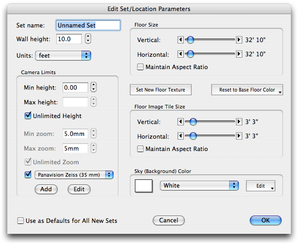Filmmaking Basics/Camera Lenses
(Redirected from Lesson:All about lenses)
|
Table of contents for All about camera lenses:

|
|
Adding to FrameForge 3D Studio lens set
Add extra lensesI like wide angle lenses so I add additional lenses to the Zeiss collection of 35mm motion picture camera lenses. Halloween Contacts Lenses Thyromine Reviews
|
An example of different lenses
My lenses
|
|
Let's take a quick quiz
 The next page
Contact your instructor
|





